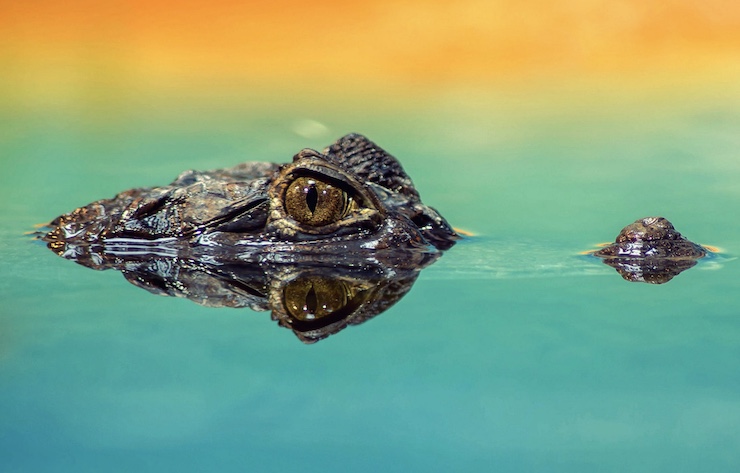Drones Are Being Deployed as Shark and Crocodile “Spotters”

Australia may be the world’s leader in the use of unmanned aerial vehicles (UAVs) to track and protect endangered wildlife. When massive bush fires broke out in 2019, the national government deployed drones to find and rescue koala bears whose habitats were threatened. The government has also launched special conservation efforts aimed at sea turtles, and more recently, has used UAVs to monitor the movements of sharks. But not all of these conservation efforts are focused on protecting animals alone; in fact, in the case of sharks and more recently crocodiles, drones are also protecting humans.
Shark and crocodile attacks in Australia are still fairly rare, of course, just as they are elsewhere. But with so much investment capital wrapped up in commercial development of the nation’s expanding beachfronts and inland real estate, the need to keep animal predators at bay is no longer a marginal priority. While UAVs can’t always substitute for manned aircraft or boats, especially in emergency rescue operations at sea, they do come equipped with close-in aerial surveillance cameras and sensors, which makes them the perfect shark and crocodile “spotters.”
“Croc spotting” in Australia was first noted in Queensland two years ago in a report published in the online magazine Zdnet.com. A local firm was already patrolling the province’s coastlines to warn beach goers of possible shark attacks. Dubbed “Little Ripper,” the company’s patented AI technology and imaging software is sophisticated enough to identify 16 different species of marine life. The large seafaring drone also comes equipped with a siren and speaker system to warn beach goers to stop swimming; it can even drop flotation pods to support up to four people during an emergency rescue. But crocodiles posed an additional challenge: distinguishing largely stationary creatures lurking in muddy waters from tree trunks and other dark objects. Apparently, Little Ripper rose to the challenge: the company claims its refined imaging technology can even identify crocs hiding in mangroves with a 93% accuracy rate.
Little Ripper didn’t develop its “Croc Wise” capability alone. Engineers from the University of Australia at Sydney who developed the original AI shark spotting algorithm worked overtime to refine it, introducing even more sophisticated color imaging to account for the greater difficulty in distinguishing crocodiles from their natural surroundings. In addition, Amazon, Inc. agreed to provide rapid delivery support to speed Little River deployments to danger zones nationwide.
Fear of shark and crocodile attacks is growing – and for good reason. Australia is home to the world’s highest number of shark attacks, about 20 annually, most of them non-fatal, but earlier this year, an experienced diver was killed by a great white shark off the coast near Sydney, which forced the beach’s closing for weeks. The fatal attack, the first in the area in over 60 years, was especially shocking because the Sydney beach has an elaborate offshore netting system in place that’s supposed to prevent such attacks. Crocodile attacks are also on the rise, because land development is extending further into the wild, disturbing the animals’ once isolated habitats. So far, there’s no firm evidence that Little Ripper’s croc or shark spotting has reduced these attacks, but the service is still new. Local authorities hope that having the new capability on hand will allow them to preempt such attacks and the mass hysteria that sometimes follows in their wake.
|